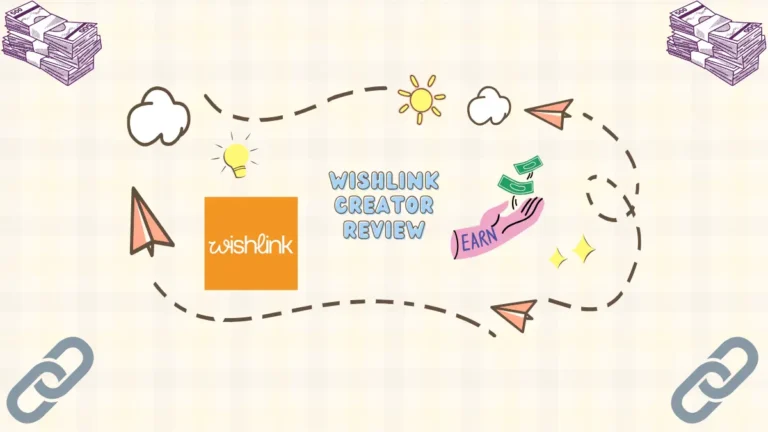ABSTRACT
The purpose is to shed insight on the future of B2C commerce, as well as significant categories and how current developments have impacted B2C. A detailed overview of current trends will show you how B2C commerce salesforce is now functioning and how bright the future seems.

INTRODUCTION
If you’ve ever shopped online for categories like clothing, gear, cosmetics, shoes, home décor, you’ve most likely done it from one of the many websites powered by B2C Commerce. B2c web design is what enabled your shopping experiences on those websites where it has some impressive capabilities.
However, shoppers aren’t limited to web and mobile sites. They also communicate with brands via email and social media. Retailers who integrate their ecommerce sites with their marketing and service solutions can make email and social media interactions more tailored and relevant to customers.
THE KEY CATEGORIES OF B2C COMMERCE

The B2C Commerce categories are listed below:
- Commerce Storefront
- B2C Commerce Extensions
- Merchandising and Marketing
- Multi Site Management and Localization
CURRENT BIG TRENDS THAT IMPACTED B2C COMMERCE
Despite the fact that fast disruption will continue until 2021, distinct B2C future trends have surfaced.
For years, the B2C e-commerce business has been on an upward trend, and this trend is expected to continue in the next years. The Indian e-commerce market is predicted to increase at a CAGR of 27 percent between 2019 and 2024, reaching US$99 billion by 2024.
And the primary drivers of the sector’s growth are likely to be groceries and fashion/apparel.
1. Stores have evolved into fulfilment centres for internet finds
The impact of pandemic led to loss of storefronts that ushered in a new generation of digital-first customers. These digital converts find a 24-hour shopping environment with quick customer service and simple shipping alternatives.
B2C players needed to come up with innovative strategies to keep conventional customers on their side. Enter kerbside service and click-and-collect choices. B2C operators combined physical and digital commerce to deliver safe, customer-centric experiences by transforming stores into ‘dark fulfilment centres.’
2. Virtual Payment Process & Multiple Payment Options
In response to social distancing worries, cashless payments increased by 90%. Customers began to utilise contactless cards and their phones more frequently. As a result, mobile wallets are no longer limited to internet purchases.
B2C players increase their sales by offering numerous payment choices, allowing them to reach a larger consumer base. Several eCommerce companies are cooperating with fintech players to give consumers with reasonable financing choices for a smooth purchasing experience.
Flipkart worked with 17 banks, NBFCs, and fintech businesses last year to provide lending choices to its customers. And, as the B2C eCommerce sector expands in the next years, more such collaborations between Ecommerce enterprises and finance players are expected.
3. Increasing Personalization
Personalization for clients’ individual needs has become possible thanks to technological advancements. Companies use analytics to give a tailored experience and relevant advice to their customers. According to a Forrester survey, 77% of consumers have chosen, recommended, or paid more for a brand that offers a personalised experience.
The trend is projected to continue as businesses focus on giving personalisation to online shoppers using AI/ML technologies and marketing integration.
By 2021, more than half of customers will expect internet businesses to anticipate their requirements and give relevant suggestions before they contact them.
B2C players have had to boost their game to give personalized experiences in the absence of face-to-face contact. The vast majority (73 percent) have added live chat or video, and 58 percent have begun to organise virtual events.

Furthermore, 66% of high-performing organisations (those who think their company is exceptionally successful at digital commerce) are providing more digital experiences in 2019 than they were in 2018.
Only 24% of underperformers, or those who claim their company is unsuccessful or underinvested in digital commerce, agree. B2C companies that are succeeding are using digital to not just navigate the unpredictable environment, but also to stay up with new-age customers.
4. Involvement of third-party Logistics

The rise of the B2C e-commerce industry has been aided by third-party logistics. Many prominent e-commerce organisations are turning to third-party logistics to streamline supply chain solutions, assure timely product delivery, and track tracking, shipping, storage, and inventory concerns around the world.
And, as the logistics industry undergoes a technological revolution, an increasing number of B2C players are outsourcing product delivery to a third party, allowing them to focus on other aspects of their business operations.
5. Omnichannel Presence
While many consumers chose e-commerce for the first time in 2020, the vast majority still prefers to touch and feel a product before making a purchase decision. As a result, some brands are optimistic about establishing an omnichannel presence.
According to a Deloitte survey, 73% of Indian respondents are willing to spend extra money on convenience.
Being omnichannel improves the experience of customers across all channels. Among all categories, fashion manufacturers and retailers have been among the most proactive in incorporating omnichannel into their strategies. Brands such as Zivame, Lenskart, and Pepperfry use an omnichannel presence approach to give a tailored and consistent experience across channels.
Brick-and-mortar store digital transformation
The tectonic move toward digital commerce does not imply that the physical store has no place in the new consumer experience. It simply has to be remained. Businesses now must expand on the unique ideas that have previously been proposed.
Stores can be used for more than just making purchases; for example, they can be:
- Brand showrooms that are tactile
- Protest hotspots in the community
- Product launch locations
- e-commerce fulfilment centres
AR and VR experiences have the potential to transform stores into immersive surroundings and must-see locations.
FUTURE OUTLOOK OF B2C COMMERCE INDUSTRY
B2C e-commerce has transformed the traditional way of conducting business, and for a developing country like India, it provides a significant potential for entrepreneurs to expand their business. Big participants in the market are optimising their platforms to attract more first-time buyers and are assisting in the expansion of the ecosystem, which includes payments, digital supply chains, and so on.
The following are some of the changes that are likely to revolutionize the B2C Commerce market in the coming years:
Drone Service Deliveries:

Companies are constantly seeking for ways to improve product delivery speed while eliminating human engagement. Drones offer a sensible and efficient solution to the aforementioned challenges.
Projected global drone delivery service market size in 2023, by region (in million U.S. dollars)

App-only solutions:

Companies are shifting away from ecommerce platforms and toward app-based platforms as the number of consumers using smartphones grows.
Benefits:
- Provide more value to customer
- Improve customer loyalty
- Reach a higher customer engagement level
- Offer instant, better customer service
- Find valuable customer insight
Data Analytics and Artificial Intelligence:

- Brands may better understand their customers’ behaviour and demands by utilising Data Analytics and AI-based solutions. Companies like Flipkart and Myntra are heavily investing in AI technology in order to provide their customers with engaging shopping experiences.
- Online retailers use artificial intelligence in the Ecommerce industry to provide chatbot services, analyse consumer comments, and provide personalised services to online shoppers. One in every five consumers is willing to buy goods or services from a chatbot, and 40 percent of online buyers are seeking for excellent offers and shopping deals from chatbots.
- While worldwide E-commerce sales are expected to reach $4.8 billion by 2021, Gartner expects that by 2020, roughly 80% of all consumer contacts will be managed by AI technologies (without the use of a human agent).
- The application of artificial intelligence in online buying is altering the E-commerce sector by anticipating shopping trends based on the products purchased and when they are purchased. For example, if online buyers consistently buy a specific brand of rice every week, the online merchant may send these customers a customised offer for this product, or even employ a machine learning-enabled recommendation for a supplementary product that goes well with rice recipes.
The future looks bright for the B2C Commerce and b2b ecommerce solutions sector, with mobile shopping set to increase at a rate of 21 percent per year over the next four years, and online retail penetration expected to reach 10.7 percent by 2024.
CONCLUSION
This article presents the inspirational future of B2C commerce. It gives a detail insight of how the current trends have led to a better B2C business. The future aspects mentioned in this article describes the possibilities of a stronger B2C commerce market. The usage of drone technology for delivery can make the delivery process easier and faster, making the system more efficient and meet the proper supply to the demand.
The app-only solution can bring in more customer to business as the engagement over smart phones is higher than that of web.
Advancement of technologies like big data, artificial intelligence can make effective business and also make it easier for customers to use the application.
Brick-and-mortar store digital transformation The tectonic move toward digital commerce does not imply that the physical store has no place in the new consumer experience. It simply has to be reimagined. Businesses now must expand on the unique ideas that have previously been proposed. Stores can be used for more than just making purchases; for example, they can be: Brand showrooms that are tactile Protest hotspots in the community Product launch locations e-commerce fulfilment centres AR and VR experiences have the potential to transform stores into immersive surroundings and must-see locations.
Drone Service Deliveries: Companies are constantly seeking for ways to improve product delivery speed while eliminating human engagement. Drones offer a sensible and efficient solution to the aforementioned challenges.
App-only solutions: Companies are shifting away from ecommerce platforms and toward app-based platforms as the number of consumers using smartphones grows.
Benefits: Provide more value to customer Improve customer loyalty Reach a higher customer engagement level Offer instant, better customer service Find valuable customer insight Brands may better understand their customers’ behaviour and demands by utilising Data Analytics and AI-based solutions. Companies like Flipkart and Myntra are heavily investing in AI technology in order to provide their customers with engaging shopping experiences.
Online retailers use artificial intelligence in the Ecommerce industry to provide chatbot services, analyse consumer comments, and provide personalised services to online shoppers. and 40 percent of online buyers are seeking for excellent offers and shopping deals from chatbots.
While worldwide E-commerce sales are expected to reach $4.8 billion by 2021, Gartner expects that by 2020, roughly 80% of all consumer contacts will be managed by AI technologies (without the use of a human agent). The application of artificial intelligence in online buying is altering the E-commerce sector by anticipating shopping trends based on the products purchased and when they are purchased.
For example, if online buyers consistently buy a specific brand of rice every week, the online merchant may send these customers a customized offer for this product, or even employ a machine learning-enabled recommendation for a supplementary product that goes well with rice recipes. The future looks bright for the B2C Commerce sector, with mobile shopping set to increase at a rate of 21 percent per year over the next four years, and online retail penetration expected to reach 10.7 percent by 2024. CONCLUSION This article presents the inspirational future of B2C commerce.
The future aspects mentioned in this article describes the possibilities of a stronger B2C commerce market. The usage of drone technology for delivery can make the delivery process easier and faster, making the system more efficient and meet the proper supply to the demand.
The app-only solution can bring in more customer to business as the engagement over smart phones is higher than that of web. Advancement of technologies like big data, artificial intelligence can make effective business and also make it easier for customers to use the application.



